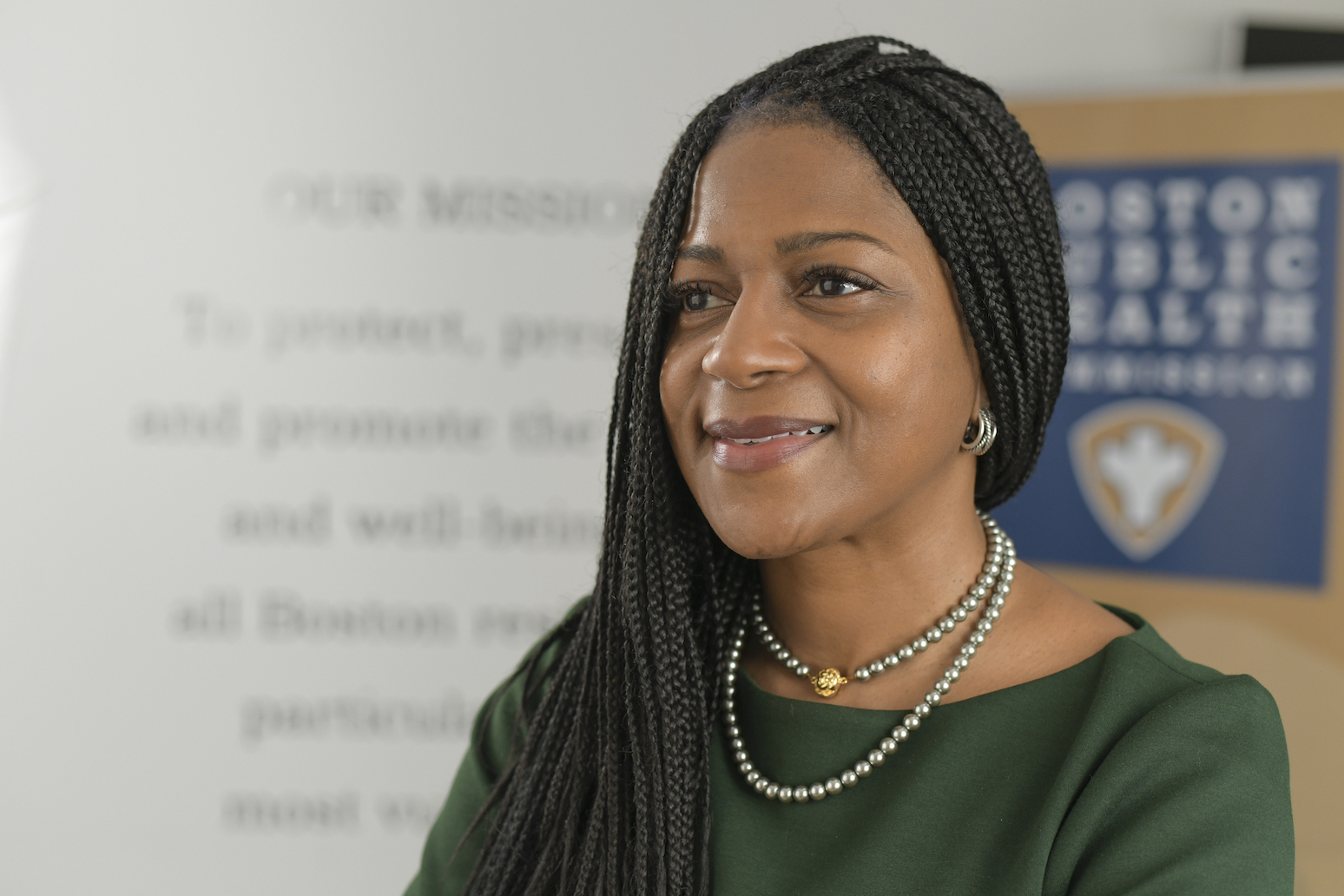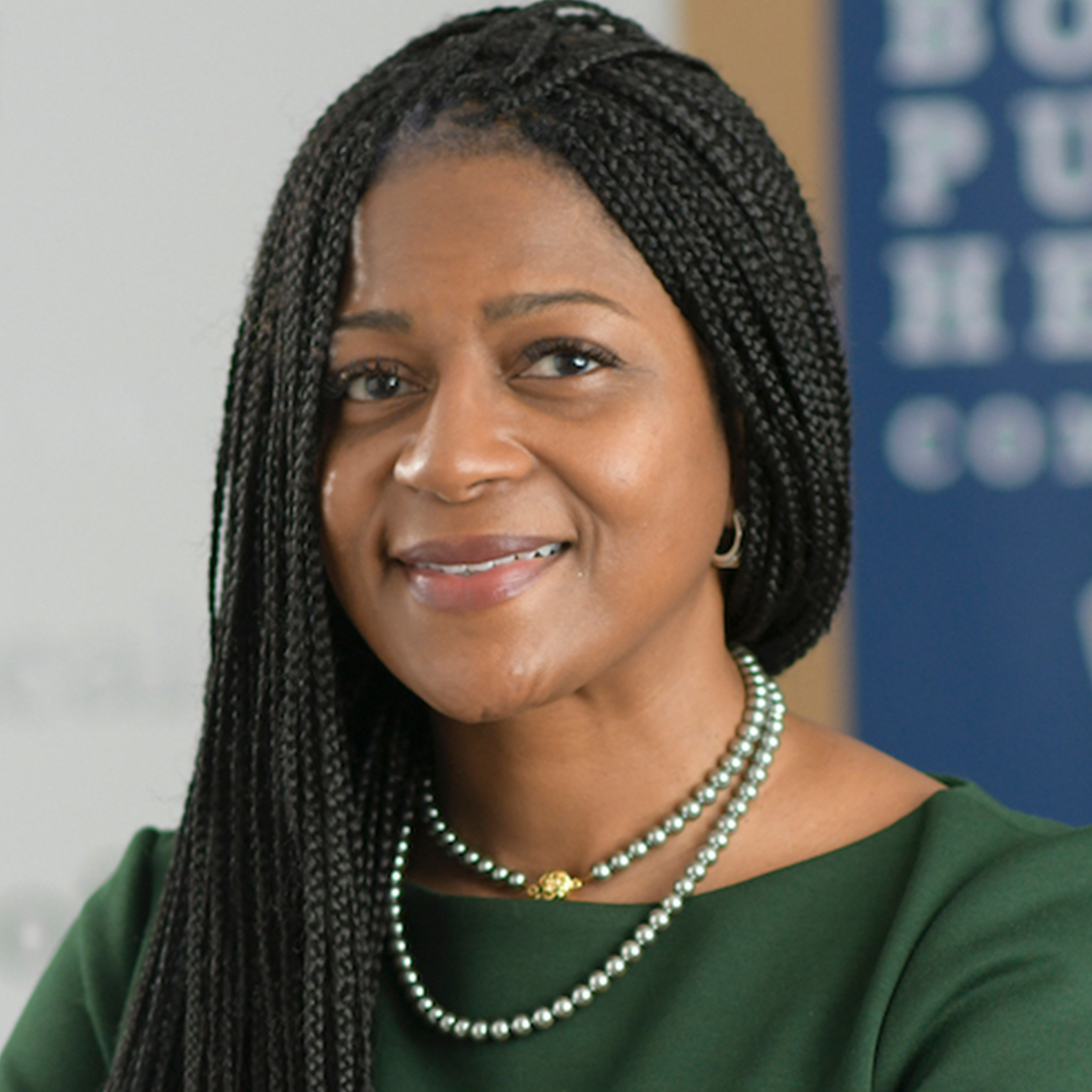Mar 3, 2022
Lessons in public health
Coverage is proud to publish columns featuring the perspectives of Black women physicians who belong to the Diva Docs network in Greater Boston. Today, Dr. Bisola Ojikutu — an infectious disease specialist, associate professor of medicine at Harvard Medical School, and nationally recognized health equity researcher who was named executive director of the Boston Public Health Commission in 2021 — shares her thoughts with Dr. Philomena Asante, leader of Diva Docs Boston, founder of the Diva Docs Black Women MD Network and creator of the Digital Health Award-winning Diva Docs series for Coverage.
I was born and raised on the South Side of Chicago by my father, who came here from Nigeria in 1967, and my mother, who is African American and whose family is from Louisiana.
When you have a West African family, being a doctor is the pinnacle of achievement, and my father inspired me to pursue a medical career.
But medicine wasn’t what interested me as a child. Very early in my life I noticed the devastating impact that residential segregation has had on cities like Chicago. It was very visible — you could see dilapidated structures in Black neighborhoods and Brown neighborhoods, and then you’d walk one block away and everything was beautiful.
As a child, you don’t get it. You don’t understand. But as I got older, I wanted to understand. I was interested in urban studies and sociology and political science in college, and I thought that I would be an academic, a sociologist.
I came to realize that being a doctor could give me a special understanding of the context of people’s lives – the inequity I had seen as a child – and that was essential if I wanted to truly make an impact on my patients and the communities in which they live.
A career focused on equity
When I attended Johns Hopkins for medical school, I did a rotation on an AIDS ward, where I saw the culmination of poverty, racism, discrimination, and homophobia. Patients had limited access to care, few visitors, and antiretroviral therapy was not widely offered.
At the same time, I was working in East Baltimore where there were high levels of drug use and opioid addiction and crack houses.
In both settings, there wasn’t an understanding of the broader context. In a sense, addiction and HIV weren’t the cause of our patients’ illnesses, they were the manifestation of the causes: a lack of access to health care, stigma, untreated mental health disorders, structural racism.
I started to realize I want to be the kind of doctor who understands these broader issues.
Mentors and sponsors were critical to helping me develop that career. I found them by raising my hand, speaking up. I recommend that to any young person: Share your unique vision of the world. Your talent will be recognized.
A mentor suggested I get experience on Capitol Hill, so I did a fellowship in Congressman Elijah Cummings’s office, where I began to understand the nuance of health policy, and how it could break down it intersects with the daily lived experience of people.
That’s when it clicked. I wanted a career that could bring together health policy and health equity, with an individual connection to patients.

I did an infectious disease fellowship, and worked in South Africa, building HIV programming to increase access to antiretroviral therapy for patients living in one of the most inequitable places in the world. Those five years were the most transformative experience of my life.
I directed the Office of International Programs at Harvard Medical School, and went on to lead HIV treatment work in 15 countries as a senior advisor with JSI, working with ministries of health and USAID missions to make sure funding streams got where they were supposed to and that access to care improved. And again, it was a transformative experience, but in a different way. I saw the deficits. Sustainability and integration with local health systems were not always prioritized. These concepts are fundamental if we want to achieve health equity.
I returned to Harvard to lead the Community Engaged Research Program and to develop community programs focused on increasing access to health care in Boston. I started to understand what was missing in terms of partnerships between academia and public and private health organizations, and where we are failing in terms of engaging communities.
That’s the experience I brought with me when I joined the Boston Public Health Commission, during the pandemic.
As we combat COVID, learning from HIV is critical
For example, mistrust and false conspiracy theories are pivotal factors, as they were during the HIV pandemic. We see mistrust related to the pharmaceutical industry, government, health care institutions, treatments, prevention strategy, and vaccines. It’s an epidemic of mistrust, and it leads to such poor outcomes. We are working on evidence-based interventions, such as training health care providers in communication strategies to address issues related to vaccine hesitancy.
There’s no easy solution, but here in Boston, we continue to get thousands of people newly vaccinated each week. We do it by meeting people where they’re at, offering them encouragement, listening, being open and honest about what we know and don’t know.
As with HIV, we also are seeing how community-based advocacy can become a groundswell. Remember, a group of community-based gay men initially led the advocacy charge during the early years of HIV and got early treatments approved for use.
Today, we are seeing the same developments with COVID-19, with organizations such as the Black Boston COVID coalition and La Colaborativa forming to drive policy and ensure communities have access to treatment.
We also see the structural drivers of health outcomes. This is not unique to HIV or to COVID-19, but, with both diseases, we see the deadly effects of residential segregation, limited health care access, and lower socioeconomic status.
Drawing from those lessons, we know what we need to do to increase access to vaccines.
We need the communities that are most affected to be involved in the process from the very beginning.
We need to let them lead.
How all of us can help end the pandemic
- Get vaccinated and get boosted. And if you are vaccinated and boosted, encourage anyone else in your life who isn’t vaccinated or boosted to do so.
- Many of our families have experienced infection by this point. Natural immunity is important. But the strength and durability of immunity after infection can vary by individual. The evidence is clear: Vaccination with boosting remains the safest strategy to prevent severe illness and hospitalization due to COVID-19. We need to continue to follow the science on this.
- Get good health information about masking and rapid antigen testing so you can limit transmission if you’re going to be in a setting where you’re going to be around people who are unvaccinated or elderly or immunocompromised.
- Remain vigilant. I know people are tired, but we can’t let our guard down now. We’re entering our third year of the pandemic. The risk of infection has decreased significantly. But there are many people who remain at risk for severe illness. We cannot simply return to normal. COVID is here to stay.
Preparing for future pandemics
We need a stronger public health foundation to prepare for future emergencies, including stronger surveillance systems, research, and evaluation.
The money we’re spending now should be viewed as a long-term investment, not short-term expenditures on temporary measures. If we’re building vaccination centers and testing centers, then we should take the opportunity to build public health capacity within the neighborhoods where people live. We need infrastructure that can be sustained and ramped up, if necessary, as opposed to rebuilding every single time.
We also need to align across sectors. We have a wealth of expertise here. The more we work together and share data and resources across hospitals, academic institutions, community health clinics, and public health organizations, the stronger we are.

Big challenges
We are facing big health care disparities today, and we need to address them in a way that leads to long-lasting change.
For example, life expectancy. The COVID-19 pandemic has shortened aggregate life expectancy for the first time in modern U.S. history -- and we know that Black and Latino individuals saw a more dramatic decrease compared to white individuals.
From HIV to obesity to diabetes to hypertension to cardiovascular disease, the burden of disease in people of color is so significant, so much more prevalent than in white individuals.
We’re hopefully at an inflection point now, where we’re able to look at structural racism and recognize it as a primary driver of these disparities.
But we can’t address structural racism by just calling it out. We need to be able to measure it.
That’s how you figure out what the interventions should be and whether or not they work.
The role of a public health commission
The Boston Public Health Commission is the oldest health department in the country. Its mission is to promote, preserve, and protect the well-being of Boston residents, particularly the most vulnerable.
We provide an enormous amount of direct services to our city. Boston EMS is the city’s ambulance service. Our Homeless Services Bureau run two shelters. We have an Infectious Disease Bureau and a Community Initiatives Bureau. Our Recovery Services Bureau does street outreach, harm reduction, needle exchange. We do “Healthy Baby, Healthy Child” maternal and child welfare work through our Child, Adolescent and Family Health Bureau. That makes the Boston Public Health commission unique. It makes us strong.
We want to make meaningful change, while we provide necessary services.
The commission has a long history of implementing programming to address inequity, and many of my colleagues have dedicated their careers to this work. Yet, we know the same disparities have persisted for decades. So, what are we missing? What works? What doesn’t? We will be strengthening our community engagement, enhancing our research and evaluation programming and looking at informatics to improve our ability to address inequity throughout Boston.
We are committed to addressing racism as a public health crisis.
In my own life I know what it feels like to not be allowed to thrive due to racism, that feeling that somebody is crushing you.
As the first Black woman and the first infectious disease physician to lead the Commission, one of my top goals is to ensure that there are opportunities for people to reach their full potential in public health careers here in Boston. We have so much potential, and I intend to harness it.
PHOTOS BY FAITH NINIVAGGI

